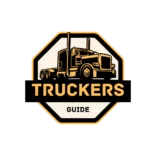Starting a tow truck business can be a rewarding entrepreneurial venture, but it requires careful planning, adherence to regulations, and sound business strategies. Below is a comprehensive guide to help you understand the steps involved and the factors to consider when launching a tow truck business.
Research and Planning
Market Research
Local Demand: Assess the need for towing services in your target area. Identify busy roadways, accident-prone zones, or regions with high vehicle density where towing may be in demand.
Competition: Evaluate existing tow companies. Understand their pricing models, service coverage, and customer reviews. Finding a competitive edge—whether it be through specialized services (like heavy-duty towing or roadside assistance) or superior customer service—can be crucial.
Customer Segments: Look at both public and private sectors. This includes insurance companies, municipal contracts, roadside assistance programs, auto repair shops, and direct consumer requests.
Regulations: Research local, state, and federal regulations that affect towing operations. Regulatory requirements can vary significantly between regions.
Business Plan Development
Executive Summary: Clearly state your business goals, target market, service offerings, and competitive advantages.
Services Offered: Define whether you will operate traditional tow truck services, offer roadside assistance, recovery for heavy vehicles, or specialized towing (such as for luxury vehicles).
Financial Projections: Prepare budgets for startup costs, operations, and expected revenues. Include detailed estimates for truck purchase or lease, insurance, licensing fees, and employee wages.
Marketing Strategy: Develop a plan outlining how you will attract customers—digital marketing, partnerships with local businesses, networking with insurance companies, or contracts with local governments.
Legal and Licensing Requirements
Business Registration
Business Structure: Choose a legal business structure (LLC, corporation, sole proprietorship) that suits your needs. Each structure has different tax and liability implications.
Registration: Register your business with the appropriate state or local authorities.
Licenses and Permits
Tow Truck Licensing: Obtain a commercial driver’s license (CDL) if required. Many jurisdictions require CDL endorsements for operating heavy vehicles.
Local Permits: Some cities and counties have specific permits for towing operations, including operating hours and allowable towing zones.
DOT Regulations: If you plan on operating intercity or interstate, be aware of Department of Transportation (DOT) regulations and interstate towing laws.
Environmental Compliance: Depending on the area, you might need permits related to environmental regulations, especially if your operations involve fuel handling or waste disposal.
Insurance Requirements
Commercial Auto Insurance: Ensure that your tow trucks are fully insured. Policies should cover liability, collision, comprehensive, and uninsured motorist situations.
General Liability Insurance: Protect your business against claims related to property damage or personal injury.
Cargo Insurance: If your services include transporting vehicles over longer distances, cargo or freight insurance can cover potential losses.
Financial Planning and Funding
Startup Costs
Truck Acquisition: Decide whether to buy, lease, or finance tow trucks. The cost varies widely depending on the type of truck (light-duty vs. heavy-duty) and whether it’s new or used.
Outfitting the Truck: Consider the investment needed for installing towing equipment, GPS, safety gear, and repair tools.
Operational Expenses: Account for fuel, maintenance, insurance premiums, licensing fees, and marketing expenses.
Office Setup: If you plan to have a dispatch center or office, include costs for rent, utilities, and technology.
Funding Sources
Personal Savings or Loans: Many startup businesses are self-funded or financed through personal loans.
Bank Loans: Prepare a detailed business plan and financial projections to secure loans from banks.
Grants and Incentives: Investigate government grants or small business loans tailored for transportation or local economic development.
Leasing Options: Leasing can minimize upfront costs for tow trucks and provide flexibility for future expansion.
Equipment, Staffing, and Technology
Equipment Selection
Type of Tow Truck: There are several types of tow trucks (hook and chain, wheel-lift, flatbed, integrated). Choose based on your service offerings.
Maintenance: Set up a regular maintenance schedule. Reliable equipment is essential for ensuring safety and minimizing downtime.
Technology: Invest in fleet management software, GPS tracking, dispatch solutions, and communication systems. These tools improve operational efficiency and customer service.
Staffing
Qualified Drivers: Hire drivers with a good driving record and who hold the necessary licenses. Proper background checks and training are essential.
Support Staff: Consider dispatchers, customer service representatives, and mechanics. A well-rounded team helps maintain smooth operations.
Training Programs: Regular training on safety protocols, customer service, and emergency procedures enhances your team’s skillset and company reputation.
Marketing and Customer Acquisition
Branding and Online Presence
Brand Identity: Develop a strong brand that conveys reliability and professionalism. Create a logo, professional website, and marketing materials.
Digital Marketing: Utilize SEO, online ads, and social media platforms. Make sure your website is mobile-friendly and provides clear contact information.
Reviews and Ratings: Encourage satisfied customers to leave reviews on platforms such as Google, Yelp, and industry-specific sites. Reputation can significantly drive business in the towing industry.
Networking and Strategic Partnerships
Local Business Relationships: Partner with auto repair shops, insurance companies, and dealerships for referrals.
Community Engagement: Engage with local community groups and sponsor local events. Visibility in the community can build trust.
Contract Bidding: Respond to public and private contract opportunities. Establishing long-term contracts can provide a stable revenue stream.
Operational Management and Growth
Dispatch and Communication
Efficient Dispatching: Implement a responsive dispatch system that minimizes wait times. Technology integration (such as mobile apps for customers) can improve efficiency.
Customer Communication: Develop protocols for timely updates and responsive customer service. Clear communication in crisis situations can improve reputation.
Performance Tracking
KPIs: Track key performance indicators like response time, customer satisfaction, revenue per truck, and maintenance downtime.
Feedback: Regularly solicit customer feedback to identify areas for improvement and to adjust services accordingly.
Scaling Your Business
Additional Services: Consider expanding into related services like roadside assistance, accident recovery, or vehicle storage.
Geographic Expansion: As your business matures, evaluate expanding to new areas or contracting with larger networks.
Continuous Improvement: Invest in professional training, upgrade technology, and optimize operational procedures regularly.
Conclusion
Launching a tow truck business involves a blend of thorough market research, compliance with legal requirements, strategic planning, and sound financial management. By carefully planning each step—from acquiring the right equipment to implementing robust marketing strategies—you can build a strong foundation for success in a competitive field. Stay informed of regulatory changes, industry trends, and customer preferences to ensure that your business remains both compliant and competitive.
This step-by-step guide should provide a solid framework for planning and launching a tow truck business. Each stage—from ideation to day-to-day operations—requires attention and adaptation as your business grows and as market dynamics change.


